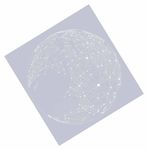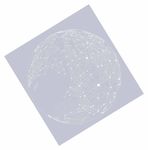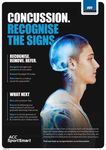CONCUSSION NZF CONCUSSION & HEAD INJURY POLICY - FEBRUARY 2018 - Fit4Football
←
→
Page content transcription
If your browser does not render page correctly, please read the page content below
PART 1 INTRODUCTION
BACKGROUND
need to act in the best interest of player safety and welfare by taking responsibility for the RECOGNITION, REMOVAL b) Applies to all Football and Futsal Matches
and REFERRAL of all players with a suspected concussion or injury, to a medical doctor. They should then ensure that
c) Forms part of the NZF statutes to which all competition coaches and participants are bound
concussion is appropriately managed as per these guidelines.
d) Does not limit or restrict the application of FIFA Statutes or NZF Statutes and, in particular, the code of conduct for behaviour
e) May be supplemented or varied from time to time by NZF
PURPOSE
CONCUSSION DEFINITION
and management of concussion to ALL those involved in football and futsal in New Zealand and incorporates best practice
guidelines.
(McCrory P, Meeuwisse WH, Dvorak J, et al. Consensus statement on concussion in sport: the 5th International Conference on Concussion
in Sport, Berlin, November 2016).
a) Establish protocols for managing suspected concussive events in all Football and Futsal in New Zealand
b) Provide best practice guiding principles for managing suspected concussion in Football and Futsal in NZ – RECOGNISE,
REMOVE, REFER, REST, RECOVER & RETURN a) A concussion is not always caused by a blow to the head. It may be caused by a direct blow to the
head, face, neck, or elsewhere on the body with an ‘impulsive’ force transmitted to the head
c) Provide guiding principles and general advice regarding the management of concussion in football and futsal competitions; and
b) A player does not need to be knocked out (unconscious) to have sustained a concussion
d) Mandate the process by which a player may continue to play in a match or return to play, following involvement in an incident
which requires assessment as to whether a suspected concussion has occurred c) A concussion typically results in the rapid onset of short-lived impairment of neurological
function that resolves spontaneously
on Concussion in Sport, held in Berlin, November 2016. This statement was produced in conjunction with Fédération
Internationale de Football Association (FIFA), and has also been adopted by FIFA. Whenever a player has an injury to the head
and becomes confused or acts abnormally
With respect to the assessment of concussion, the advice contained within this Concussion Policy is of a general nature only. Individual or they lose consciousness, even for a few
seconds, they have been concussed
standard of care and should not be interpreted as such.
GUIDELINE SUMMARY
• Recognise and Remove. If concussion is suspected, remove the player from play/activity immediately and seek an urgent assessment
by a medical doctor. If in doubt a concussion has occurred then sit the player out anyway and follow the protocol set out
• Concussions often occur without loss of consciousness
• Extra caution is required for child and adolescent athletes
• It may take several hours (or even days) post injury for some or all of the symptoms of concussion
to emerge
• Non-medical personnel have an important role to play in recognising the signs and symptoms of
concussion
• Concussion can present in a similar manner to other catastrophic conditions with delayed onset
of symptoms
• Only a medical doctor can provide assessment and diagnosis of concussion, diagnosis can be
• No player should return to any sport/training/activity on the day of a concussive injury.
• Players should only return to training or play when symptom free and cleared by a
medical doctor
according to the development of new knowledge.
2 New Zealand Football - Policy Regarding Concussion & Head Injuries New Zealand Football - Policy Regarding Concussion & Head Injuries 3PART 2 CONCUSSION MANAGEMENT PROTOCOLS
RECOGNISE REFER FOR MEDICAL ASSESSMENT
When a concussion, or possible concussion, occurs it is important to take action immediately and seek diagnosis from a medical Any player who is suspected of having sustained a concussion should have an assessment from a medical doctor.
remove the player/athlete from the sport/activity immediately.
Non-medical personnel, such as coaches, team mates/players, a) Diagnose whether a concussion has occurred – based on clinical judgement
concussion and the effects (e.g. behaviour/symptoms), and should
take responsibility for removing the injured player/athlete from the c) Advise the player as to medical management
sport/activity immediately. d) Advise the player as to when it is appropriate to begin a Graduated Return to Play Program (refer table 1 for Graduated
Return to Play Guidelines)
e) Clear the player to return to play following the Graduated Return to Training Program, as detailed in this Concussion Policy
a) Loss of consciousness or responsiveness
b) Lying motionless on the ground/slow to get up
c) A dazed, blank or vacant expression assessment to aid diagnosis by a medical doctor.
d) Appearing unsteady on feet, balance problems or falling over
e) Grabbing or clutching of the head or
f) Impact seizure or convulsion
The majority (80-90%) of concussions resolve in a short (7-10 day) period. Some players will have more long-lasting symptoms.
Players diagnosed with a concussion need to rest and adhere to all guidelines provided by their medical doctor. Recovery may
be longer in children and adolescents. As a result the return to play process should be more conservative for children and
a) Symptoms; Headache, dizziness, ‘feeling in a fog’ adolescents. It should be stressed that there is no arbitrary time for recovery and that decisions regarding a return to training
b) Behavioural changes; Inappropriate emotions, irritability, feeling nervous or anxious and play need to be individualised.
c) Cognitive impairment; Slowed reaction times, confusion/disorientation - not aware of location or
Players/athletes MUST be symptom free and must have had clearance from a medical doctor prior to embarking
score, poor attention and concentration, loss of memory for events up to and/or after the concussion
on the return to play process.
The Pocket Concussion Recognition Tool or the ACC SportSmart Concussion Card may be used to help
identify a suspected concussion.
• DR-ABC-S (Danger, Response, Airway, Breathing, Circulation, Send for help)
• Treat all unconscious players as though they have a spinal injury
• An unconscious player must ONLY be moved by personnel trained in spinal immobilisation techniques
• Urgent hospital care is necessary if there is concern regarding the risk of structural head or neck injury – call 111
REMOVE FROM PLAY
A player should be removed from play immediately if a concussion is suspected. A player should never return to play on the day
of a concussive injury.
A player with a suspected concussion should be immediately removed from the match, and should not be returned to play/
Players with a suspected concussion should not; be left alone, drive a motor vehicle or consume alcohol. The player MUST
also be in the care of a responsible person who is aware of the concussion.
as to whether the player can return to play. All players should be referred for a medical assessment.
NZF suggests all clubs and teams have a list of local medical doctors, concussion clinics and emergency departments close to
where the match is being played, as part of their emergency action plans or health and safety plans.
4 New Zealand Football - Policy Regarding Concussion & Head Injuries New Zealand Football - Policy Regarding Concussion & Head Injuries 5PART 2 CONCUSSION MANAGEMENT PROTOCOLS PART 3 CONCUSSION MANAGEMENT SUMMARY
RETURN TO PLAY
Graduated Return
To Play Program.
GRADUATED RETURNING TO PLAY GUIDELINES RECOGNISE
STAGE 1 STAGE 2 STAGE 3 STAGE 4 STAGE 5 STAGE 6
NO ACTIVITY LIGHT AEROBIC SPORT-SPECIFIC NON-CONTACT FULL CONTACT RETURN TO PLAY
EXERCISE EXERCISE TRAINING DRILLS PRACTICE
EXERCISE, RESTORE RETURN 1. RECOGNISE
INCREASE ADD NORMAL Recognise the signs of
RECOVERY COORDINATION, & CONFIDENCE & ASSESS
HEART RATE MOVEMENT
COGNITIVE LOAD FUNCTIONAL SKILLS
GAME PLAY TO PLAY a suspected or potential REMOVE
concussion
Physical and Walking, swimming Running drills. Progression to more Following medical
cognitive rest or stationary cycling No head impact complex training clearance
(complete rest until keeping intensity, No activities drills, eg. passing participate in 6. RETURN 2. REMOVE
cleared by a medical resistance training drills. May start normal training
TO PLAY Remove from play if a
professional to progressive activities concussion is suspected and
begin stage 2) resistance training Players should undertake
a graduated return to if in doubt ensure you sitYou can also read
























































